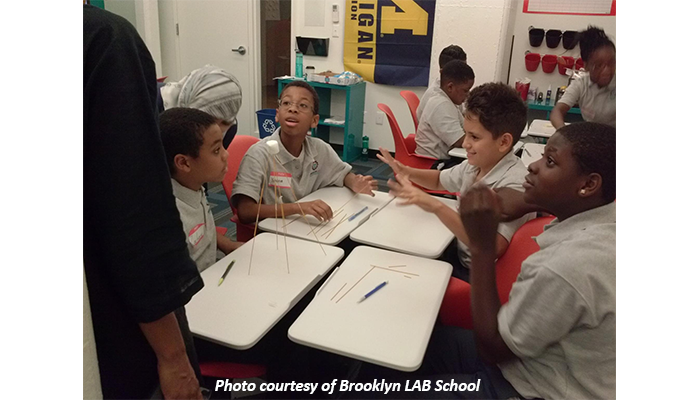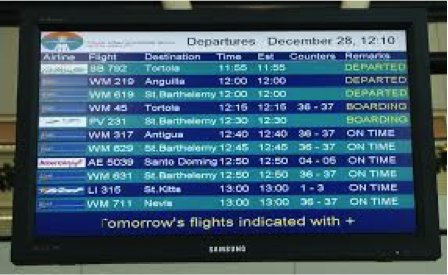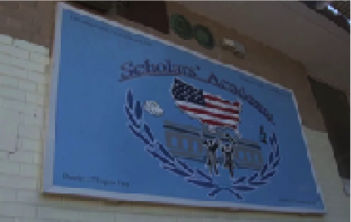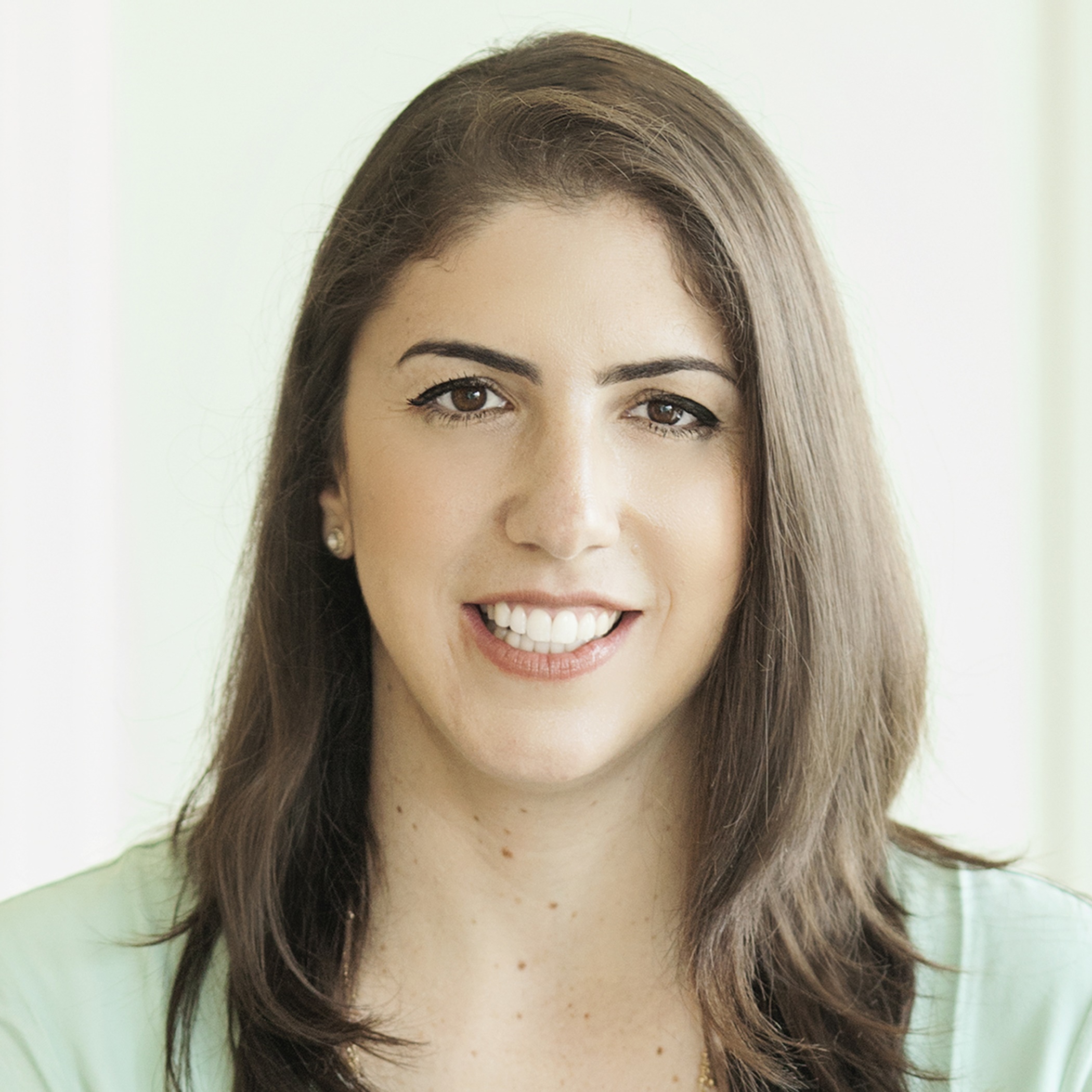New Designs for School
Symbols of Our Learning Part II: Next Gen K-12 Instruction in NYC
Topics

We’ve all had the experience of truly purposeful, authentic learning and know how valuable it is. Educators are taking the best of what we know about learning, student support, effective instruction, and interpersonal skill-building to completely reimagine schools so that students experience that kind of purposeful learning all day, every day.
Practitioner's Guide to Next Gen Learning
Artifacts, symbols, and pictures that stood out from visits to five innovative schools in New York City
Happy 2015!
This is a good time of year to reflect on where we have been and where we are going. As part of the reflection process, I am launching a K-12 Notes from the Field blog series to highlight individual schools, components of academic models, or tools being used by teachers and leaders.
Today, I continue to share from a recent visit I led to New York City schools working on personalized learning. NGLC brought 50 school leaders and teachers from across the country to see five schools in less than two days! We asked our participants to post artifacts, symbols, and pictures that stood out from the whirlwind visits.
Next Generation Staffing and Data Use
The NGLC team has known school leaders Erin Mote and Eric Tucker from the very beginning of their planning process. We have watched as the duo’s plan transformed from vision to reality, opening up the Brooklyn middle—and soon high—school in August of 2014. The school has adopted an instructional model and human capital strategy to optimize a mix of large and small group instruction alongside independent practice.
Instructional spaces at LAB are sometimes led by a single, master teacher. Other times, they include mixes of small group instruction led by LAB Corps tutoring fellows, or targeted interventions led by learning specialists or special educators. Digital Media and Learning Fellows support the school’s focus on entrepreneurial learning, including STEAM fields such as robotics, coding, debate, digital media production, and video game design. Many visitors commented that the standout image from this visit involved the hands-on projects that many students were working on in small groups.
The visit also emphasized LAB’s belief that assessment must serve as a catalyst that unlocks the potential of innovative school models. Mote reflected that “LAB’s personalized and competency-based approach relies on data to support multiple student pathways for learning.” Tucker observed that “part of cultivating deeper learning is working to measure multiple aspects of the competencies, dispositions, and skills that matter most for future success.” Mote walked visitors through Cortex, the next gen learning platform supported by the Michael & Susan Dell Foundation, which is designed to leverage the Ed-Fi Data Standard to generate actionable evidence that helps to improve and inform teaching and learning. Cortex is designed to help LAB document, analyze, and understand the processes by which intellective competencies are developed. We look forward to seeing how this emphasis on assessment for student learning evolves at Brooklyn LAB.
Students Arriving and Departing to Own Their Learning
Some of us were privileged to be able to visit MS88—a large New York City Department of Education middle school that is using New Classroom’s School of One model for 6th grade math instruction.

Led by a charismatic, experienced principal with a team of committed teachers, the school has embraced multiple models. In one morning, we saw the School of One math classroom, a virtual life/avatar-based social studies curriculum, and a classroom that employed live streaming from Discovery Education. The artifact that stood out the most for me from the School of One math classroom were the airport terminal screens that greet all students and give clear instructions for how they are to spend their instructional time. For the sake of student confidentiality, I will not post the actual screen here, but it did look exactly like those we are used to seeing in airports.

The acronyms on the screen directed each student to a different SO1 Modality (School of One Modality), which were clearly explained on poster boards. What was particularly interesting to observe was the way that 6th graders did not seem to assign any social stigma to such personalization and customization; kids quietly and naturally distributed themselves to each terminal/modality much the way busy travelers would in any major airport. The idea that not all kids in a given classroom should be working on the same lesson or modality had become seamlessly integrated into the school’s learning culture.

Blended Learning, Diversity, & Joy
Finally, our third group had an opportunity to visit Scholars Academy in Far Rockaway, Queens. It was a long trip to get out of the city and travel all the way to this beachside community, but the NGLCers who went loved it. Scholars Academy is the second-most diverse school in New York, and the artifact our visitors chose was the logo of the school that portrays the pride the school feels in its diversity.
Despite class sizes of 33 students per teacher, students in grades 6-12 are working to blend learning in all subjects. The school relies mostly on teacher-created resources to do this work.
What struck the visitors most was the applicability of blending learning to a big school in a traditional public school environment. Many of our grantees have seen blended learning models work in environments with more homogenous students or in settings with lower student/teacher ratios. Scholars Academy, however, is attempting to personalize learning in an environment where students come from dramatically different socioeconomic backgrounds and cultures—each with different cultural approaches to learning—and without some of the more flexible configurations of time, space, and human capital that we all assume is a necessary pre-condition for personalized learning.
You can check out complete virtual video tours of both the middle school and high school of Scholars Academy to get a fuller understanding of the school’s culture of joy.
Personalized Learning: Defining Our Terms
Defining personalized learning can often be a moving target in a field as dynamic and decentralized as education. Our school grantees, funder partners, and thought leaders have all worked hard to “define our terms”—as my 9th grade English teacher drilled into me long ago. But it still remains difficult to define what we mean by a new academic model that is customized, individualized, creates flexibility, and is not constrained by the time, space, and staffing set-ups of schools built for an industrial age. The artifacts and symbols shared here helped our K-12 school leaders leave New York with a better understanding of how next generation, post-Industrial schooling is taking shape—with varying tools and approaches and contexts—but all with a common goal.




